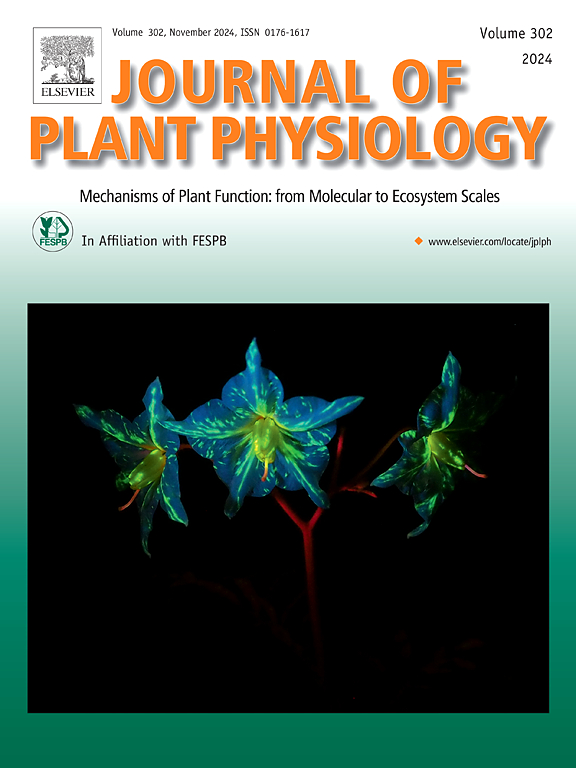Revising the role of ABA as regulator of flowering and seed development
IF 4.1
3区 生物学
Q1 PLANT SCIENCES
引用次数: 0
Abstract
The time of flowering or heading is regulated by environmental cues, mostly by light and temperature. Abscisic acid (ABA), considered the main phytohormone that regulates plant response to abiotic stress, also plays an important role in flowering. ABA can both stimulate and inhibit flowering. In Arabidopsis, ABA accelerates flowering time during drought escape. On the other side, ABA can also repress flowering transition to ensure the time of flowering at the right moment for plant. In cereals, ABA also plays dual role in regulating heading time. Furthermore, some components of the ABA pathway can simultaneously act as positive and negative regulators of heading. ABA is also involved in another important aspect of the plant reproductive stage: seed/grain development. ABA plays positive role in the synthesis of storage proteins and lipids during seed-filling. In contrast, ABA negatively regulates seed size. In this review, we present recent knowledge regarding the complex role of ABA in the regulation of the reproductive stage in Arabidopsis and in the most important crop plants.
修正ABA在开花和种子发育调控中的作用
开花或抽穗的时间受环境因素的影响,主要受光和温度的影响。脱落酸(ABA)被认为是调节植物对非生物胁迫反应的主要植物激素,在开花过程中也起着重要作用。ABA具有促进和抑制开花的双重作用。在拟南芥中,ABA加速了干旱逃逸期间的开花时间。另一方面,ABA还可以抑制开花过渡,保证植株在合适的时间开花。在谷物中,ABA在调节抽穗时间方面也具有双重作用。此外,ABA通路的某些组分可以同时作为抽穗的正、负调节因子。ABA还参与植物生殖阶段的另一个重要方面:种子/籽粒发育。ABA对种子灌浆过程中贮藏蛋白和脂质的合成具有积极作用。ABA对种子大小有负调控作用。在这篇综述中,我们介绍了ABA在拟南芥和大多数重要作物的生殖阶段调控中的复杂作用的最新知识。
本文章由计算机程序翻译,如有差异,请以英文原文为准。
求助全文
约1分钟内获得全文
求助全文
来源期刊

Journal of plant physiology
生物-植物科学
CiteScore
7.20
自引率
4.70%
发文量
196
审稿时长
32 days
期刊介绍:
The Journal of Plant Physiology is a broad-spectrum journal that welcomes high-quality submissions in all major areas of plant physiology, including plant biochemistry, functional biotechnology, computational and synthetic plant biology, growth and development, photosynthesis and respiration, transport and translocation, plant-microbe interactions, biotic and abiotic stress. Studies are welcome at all levels of integration ranging from molecules and cells to organisms and their environments and are expected to use state-of-the-art methodologies. Pure gene expression studies are not within the focus of our journal. To be considered for publication, papers must significantly contribute to the mechanistic understanding of physiological processes, and not be merely descriptive, or confirmatory of previous results. We encourage the submission of papers that explore the physiology of non-model as well as accepted model species and those that bridge basic and applied research. For instance, studies on agricultural plants that show new physiological mechanisms to improve agricultural efficiency are welcome. Studies performed under uncontrolled situations (e.g. field conditions) not providing mechanistic insight will not be considered for publication.
The Journal of Plant Physiology publishes several types of articles: Original Research Articles, Reviews, Perspectives Articles, and Short Communications. Reviews and Perspectives will be solicited by the Editors; unsolicited reviews are also welcome but only from authors with a strong track record in the field of the review. Original research papers comprise the majority of published contributions.
 求助内容:
求助内容: 应助结果提醒方式:
应助结果提醒方式:


